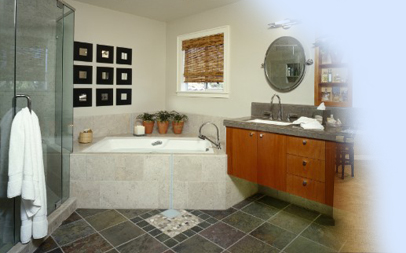|
While doing home additions can be an expensive proposition, one of the easiest ways to add new rooms to your home is to utilize your existing space. Most basements are dark areas where we store unread books, used (or unused) toys, and out-of-date technology we don’t use anymore. You can get more from your basement. Basement finishing is a cost-effective way to maximize your living space. You could have a guest room, a home office, a bar, whatever! If you’re considering a basement finishing projects, these are the steps to take to make the process as easy as possible: Step #1 – Check for Potential Water Problems Even if you’ve never had issues with leaks, dampness, or flooding, double-check before you begin. Problems in this area can, in addition to the temporary nightmare it can cause, ultimately detract from the aesthetic appeal from your basement. Speak with a home inspector who specializes in basement or foundation waterproofing problems so that you can do any needed groundwork. Step #2 – Decide on the Best Use For which activities will your basement offer the best advantage? The lack of light can be beneficial if you want to set up a home entertainment center or a dark room. The isolation keeps the sound insulated, which can be effective if you want to build a spot to practice or record music. Basements also have easy access to water lines, as well as heating and cooling ducts. This makes adding a bathroom or laundry room easier to build than in most areas of the house. Step #3 - Consider Hiring an Architect or Interior Designer If you’re finishing your basement, you obviously want to have a place that looks good and is easy to navigate. An architect or interior designer can help you design an eye-catching, comfortable space. Step #4 – Think About Your Air Circulation When your home was first built, the odds are that there were few heating or air-conditioning vents installed in the basement. You need to think about the need for good air circulation, and you may have to add a few openings. You may also have to include a return air duct. If you do, make sure it’s located far from the furnace. If it’s too close, it may suck dangerous exhaust fumes into your basement, which can lead to carbon monoxide poisoning. You may also want to install a carbon monoxide detector in your basement so as to warn you of any problems with the furnace or any other appliances you may be installing. Step #5 – Make The Most of Natural Light You’ll most likely want to add light to your basement. If parts of the basement extend aboveground, you can install new windows or enlarge existing ones. If that’s not a feasible option, you can dig window wells. A word of caution: window wells can increase your chances of water problems, so make sure you add waterproof covers. An advantage of enlarged windows is that they provide additional escape routes in the event of fire. However, a common concern is that they can provide thieves with ideal access to the home. But you can reduce that risk by installing glass bricks at high-risk locations, instead of regular windows. There’s also the old-fashioned home security system as well! You can also maximize natural light by installing interior walls between rooms, so as to open pathways for the light to reach interior rooms. This can also save on your electric bill! Step #6 – Be Creative With Artificial Light Most ceilings are low, which can create a claustrophobic feeling. To solve this problem, use indirect lighting that beams large clusters of light on the ceiling. This will create a more “open” feeling in your basement. Installing mirrors on walls and ceiling can also heighten these lighting effects.
Step #7 - Insulate Your Basement Well Proper insulation is essential in creating a comfortable basement. Besides keeping out the cold, basement insulation prevents condensation. Without insulation, the ground stays cool, which keeps the basement walls cool, particularly during the winter. When the warm air comes in contact with the cool basement walls, it gives up some of its moisture in the form of condensation, which is the primary source of the moisture that leads to mold and mildew problems. Effective insulation separates the warm air of the room from the cool walls, thus preventing the moisture problems caused by condensation.
8. Select Practical Furnishings Be careful of using lavish carpeting and drapes, because they tend to absorb moisture, thus creating condensation. Be careful about storing clothes, linens and books in a basement for the same reason. For floors, area rugs are ideal because they can be removed, cleaned and dried easily. If you must have wall-to-wall carpeting, consider a low pile commercial or indoor/outdoor type, as they are less susceptible to moisture.
If you follow these steps, you’ll have no problem creating a living space in a basement that is comfortable for you and will add to your home’s market value. Properly finishing a basement doesn’t cost nearly as much as it does to build an addition, so in addition to adding market value to your home, you’ll add money to your wallet! Privacy | Terms and Conditions |

